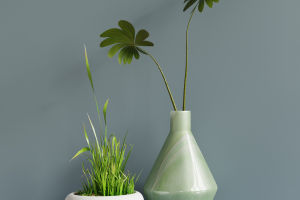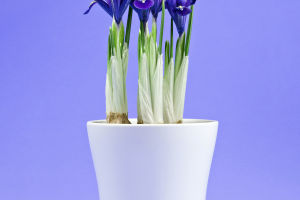In the realm of horticulture, few plants rival the remarkable versatility and resilience of the Kalanchoe.
Belonging to the Crassulaceae family, this succulent plant genus comprises over 200 species, many of which are renowned for their vibrant blooms and minimal maintenance requirements.
Among gardening enthusiasts and botanists alike, the Kalanchoe stands as a shining example of easily farmed flora, offering a plethora of benefits to both novice and seasoned growers. One of the most notable characteristics of the Kalanchoe is its adaptability to various environmental conditions. Originating from regions with arid or semi-arid climates, such as Madagascar and Africa, these plants have evolved to thrive in conditions of minimal water availability and ample sunlight. As a result, they are well-suited to cultivation in diverse climates, ranging from temperate to tropical regions, making them accessible to farmers worldwide.
Kalanchoe species exhibit remarkable drought tolerance thanks to their succulent leaves and specialized water-storing mechanisms. This innate ability to withstand extended periods of drought makes them an ideal choice for cultivation in regions prone to water scarcity or erratic rainfall patterns. Their preference for well-draining soil further enhances their resilience, mitigating the risk of root rot and other moisture-related issues common in traditional farming practices.
In terms of cultivation, Kalanchoe plants require minimal effort and resources, making them an attractive option for both commercial and hobbyist growers. With relatively modest soil and nutrient requirements, they can thrive in a variety of growing mediums, including sandy, loamy, or rocky soils. Their low susceptibility to pests and diseases reduces the need for chemical interventions, aligning with sustainable farming practices and minimizing environmental impact.
One of the most appealing aspects of Kalanchoe cultivation is the ease of propagation. These plants readily produce offsets, or "pups," which can be effortlessly separated from the parent plant and replanted to establish new individuals. Many Kalanchoe species exhibit prolific flowering habits, yielding clusters of colorful blooms that not only enhance aesthetic appeal but also attract pollinators such as bees and butterflies, further contributing to ecosystem health.
From a commercial standpoint, Kalanchoe cultivation offers numerous economic opportunities for farmers and nurseries alike. With high market demand for ornamental plants and cut flowers, Kalanchoe varieties have emerged as popular choices for landscaping, interior décor, and floral arrangements. The longevity of Kalanchoe blooms, coupled with their ability to thrive in indoor environments with minimal sunlight, makes them well-suited for the booming indoor plant market, catering to urban dwellers seeking greenery for their living spaces.
Beyond their economic value, Kalanchoe plants also hold significant cultural and medicinal significance in various traditions worldwide. In some cultures, they are revered for their symbolic associations with prosperity, longevity, and positive energy, often incorporated into rituals and ceremonies. Certain Kalanchoe species possess therapeutic properties, with extracts used in traditional medicine to treat ailments ranging from wounds and inflammation to respiratory disorders and skin conditions.
The Kalanchoe stands as a testament to the beauty and resilience of nature, offering a wealth of benefits to farmers, gardeners, and enthusiasts alike. With its adaptable nature, minimal maintenance requirements, and ornamental appeal, this versatile plant genus continues to captivate hearts and gardens worldwide. Whether adorning windowsills, embellishing landscapes, or enriching ecosystems, the Kalanchoe remains a cherished symbol of botanical splendor and sustainable farming practices.


